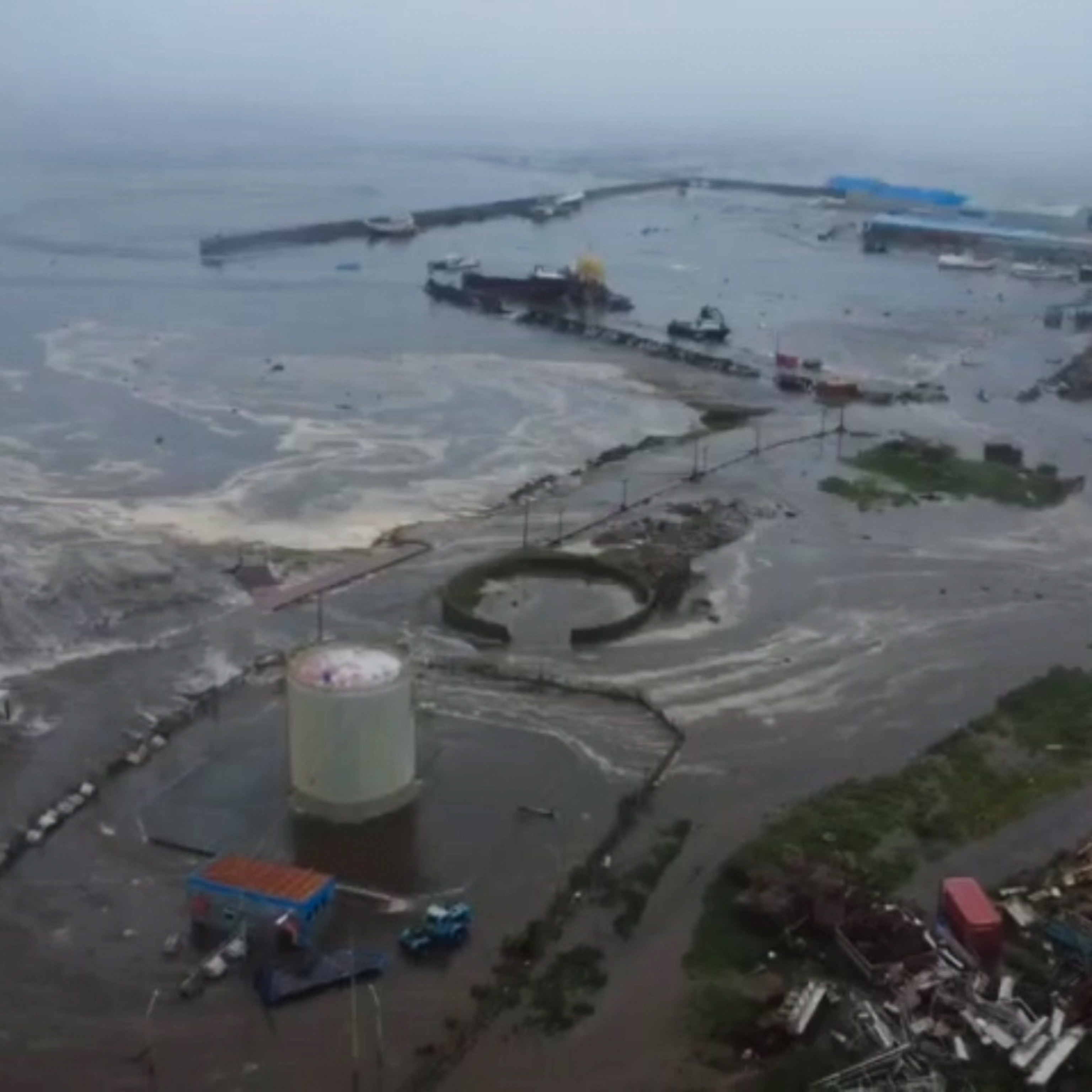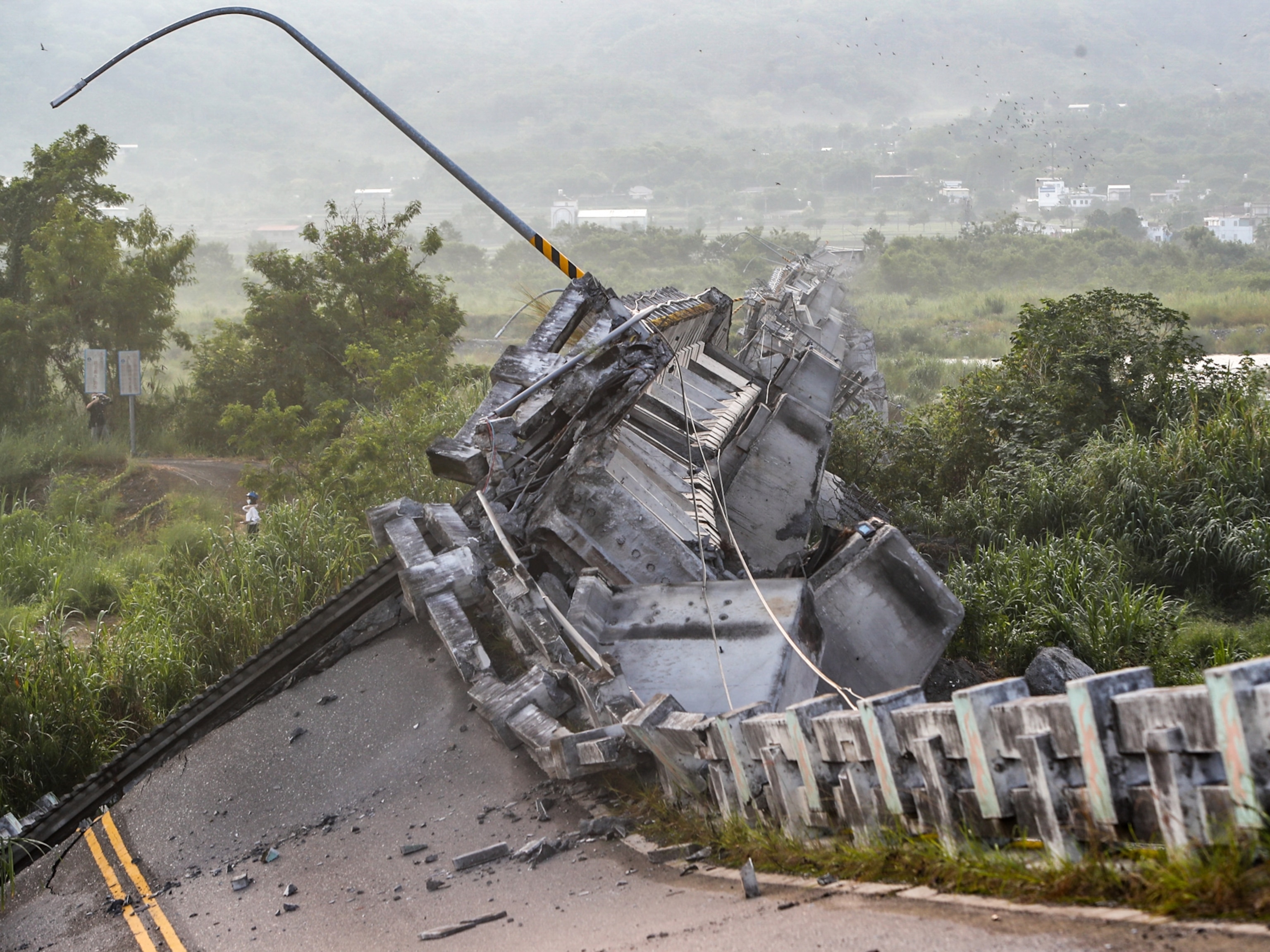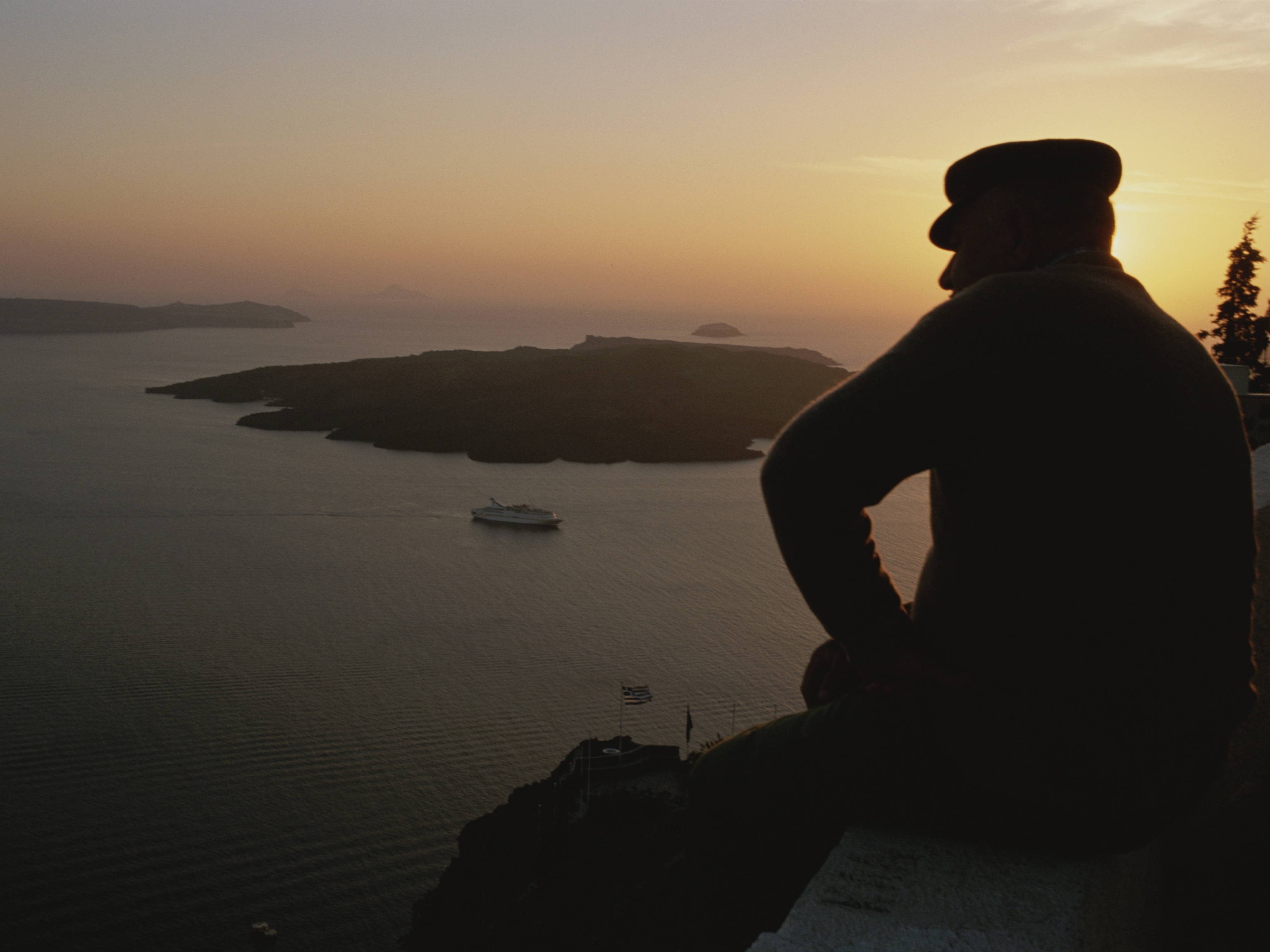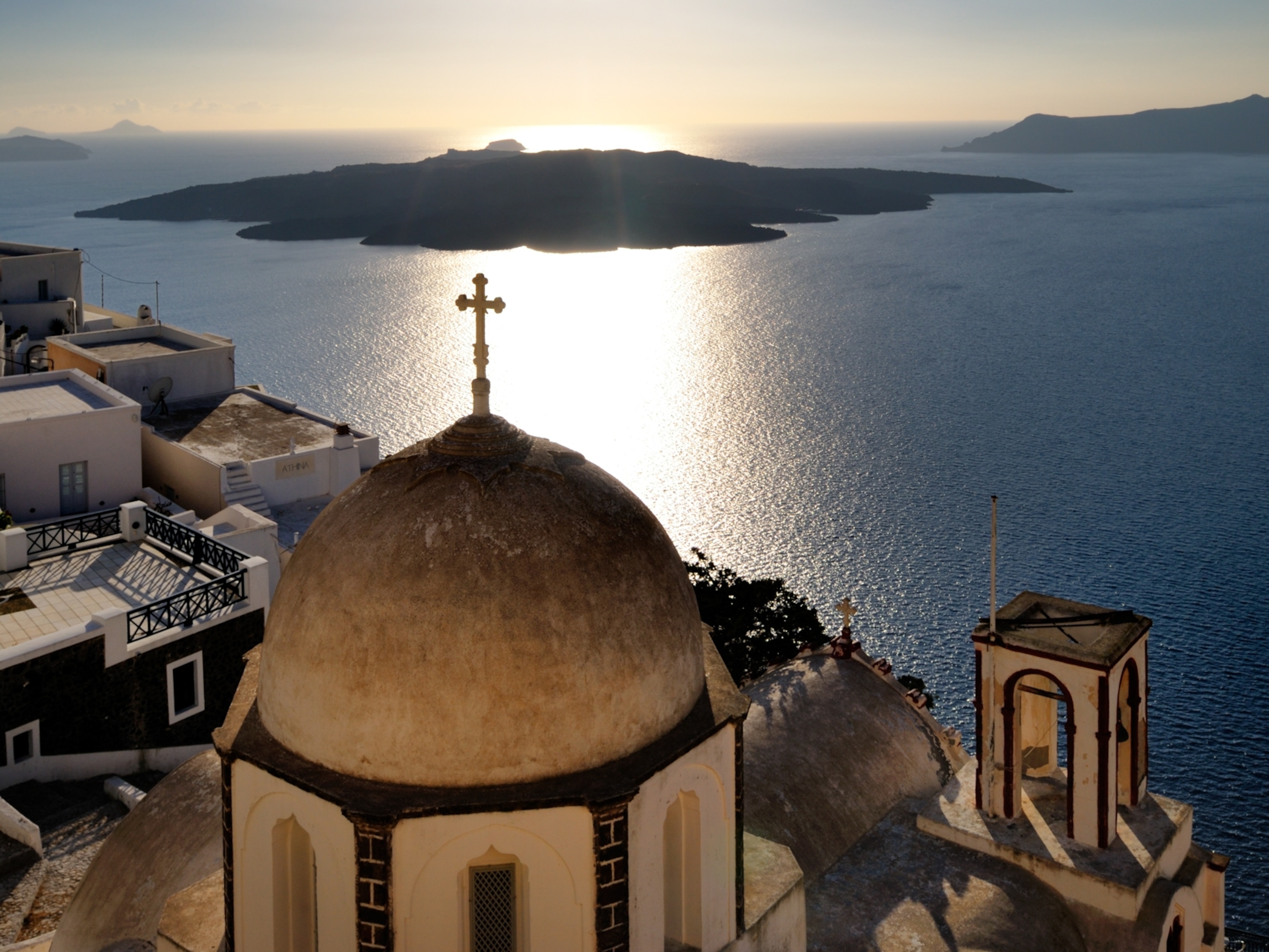A tsunami swept across Indonesia's islands of Sumatra and Java the night of December 22, just before 9:30 p.m. local time. There was no notice for the wall of water, which left devastation in its wake. Though casualties are likely to rise as missing people are located, at least 220 are confirmed dead and more than 800 are injured.
The reason behind the lack of warning is the surprise source of the waves: Unlike past events triggered by earthquakes, this tsunami was most likely caused by the collapse of an offshore volcano.
The geologic beast in question, Anak Krakatau, has been undergoing a stuttering eruption since June 18 of this year. While more detailed information about the exact sequence of events leading to the tsunami is still emerging, much of the evidence is currently pointing toward a landslide associated with the volcano's activity. A large portion of the southern flank of the volcano slid into the ocean yesterday, according to images from the European Space Agency's Sentinel-1 satellite.
Such events are not unusual, notes geophysicist Mika McKinnon: “Volcanoes are just weakly glued together layers of rock, where every eruption just kind of slips more down, so you have all these layers of rock that are tilted into the direction of downhill.” It doesn't take much for a piece to break loose. And if that piece happens to be large, it can send massive waves toward shore with little to no warning.
“You can think of it as being a really large and destructive cousin of throwing a pebble into a pond,” McKinnon says.
What causes a tsunami?
When most people think of tsunamis, images of ground-rattling earthquakes usually follow. These are some of the most common sources of the devastating walls of water. Movements in the ocean crust can displace the overlying chunk of water, causing waves to pile up and crash into nearby shores.
“But they're not the only way to get tsunami,” McKinnon says. Glacier calvings, landslides, and volcanic eruptions can also spark the massive waves.
In this case, the most likely culprit is Anak Krakatau. If this name sounds familiar, that may be because the volcano is the product of the infamous Krakatoa volcano, which roared to life in 1883 in one of the largest eruptions of modern times. The eruption was so large it could be heard nearly 3,000 miles away on Rodriguez Island, and a resulting tsunami killed more than 36,000 people. It also could have been the inspiration for Edvard Munch's famous artwork The Scream. After the fiery storm, all that was left was a massive crater.
“But it didn't die. Instead a new volcano started growing,” McKinnon says. The baby volcano was aptly dubbed Anak Krakatau, or “child of Krakatoa.”
What do we know about the Indonesia event?
For this week's event, the volcanic source of the waves initially generated some confusion about what was happening onshore. Earthquakes can give some notice of potential tsunamis, but the landslide didn't generate regular earthquake waves. Instead, researchers picked up a low-frequency rumble around the time of the tsunami—a hint that a landslide may be to blame.
Scientists have only recently started studying these low-frequency signals, but they are commonly associated with volcanic activity—like the movement of magma deep underground or the collapse of volcanic chambers—or events like glaciers calving or submarine landslides.
This is a complicated situation, and it does not fall under the usual tsunami warning category.Janine Krippner, Concord University
“The signal has been found in Naypyitaw, Myanmar, as well as across Java, Sumatra, [and] Borneo,” Jamie Gurney, founder of UK Earthquake Bulletin, says via Twitter direct message. But the waves didn't stop there—they traveled as far as Arti in the Russian Urals and Kambalda in Western Australia.
Modeling provides additional clues to what happened. Using the arrival times of the waves and the known topography of the region, Andreas Schäfer, a post-doctoral researcher at Karlsruhe Institute of Technology, began testing where the land might have given way. The velocity of the wave is determined by water depth and wave height related to the slide itself, allowing researchers to simulate the events.
Schäfer's model suggests that the landslide traveled southeast or southwest, with waves that took between 30 to 35 minutes to arrive onshore. Right now, confirmed data suggest the waves first hit at Marina Jambu, near Anyer in Java.
And at the center of it all sits Anak Krakatau.
The child of Krakatoa
Krakatoa's child has made itself heard in recent years. It's currently sending a massive plume of steam and dark jets of volcanic material into the air as part of a six-month-long volcanic rampage.
“It could be that the activity this year built up material that contributed to this probable collapse event,” Concord University volcanologist Janine Krippner says via direct message. “But it is too early to tell.”
The volcanic collapse could have alternatively resulted from material that's built up over the decades. Back in 2012, researchers modeled the effects of a massive collapse of the volcano's southern flank, and they concluded that the resulting tsunami could trigger 50- to 100-foot-tall waves on nearby shores within a minute.
“What this tells us is that a collapse and tsunami was a known hazard at Anak Krakatau,” Krippner says. “But even knowing this does not mean that when and how big can be predicted.”
Though scientists can analyze past events to model possible future ones, it's still impossible to give much warning for these landslide-driven local tsunamis. The devastating 2004 earthquake and tsunami off the coast of Sumatra sparked a slew of studies into early warning systems for earthquake-generated waves. But this latest event, as well as another “surprise” tsunami earlier this year near Palu, Indonesia, underscore the need for more work.
“With such an active volcano, the hazards may change over time,” Krippner says. “This is a complicated situation, and it does not fall under the usual tsunami warning category, as there was no earthquake preceding the event.”
And then there's the need for adequate financial resources to take meaningful action, Krippner adds: “While we of course need more hazards research, we need funding, support, and cooperation to turn the research results into policy and action.”












